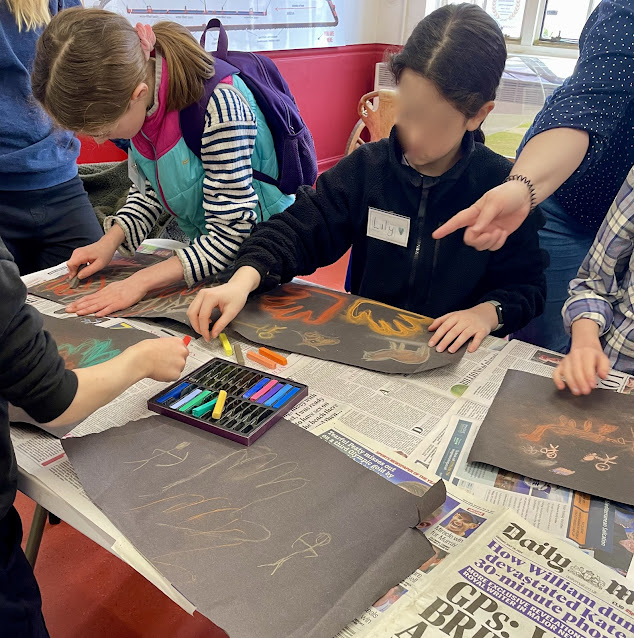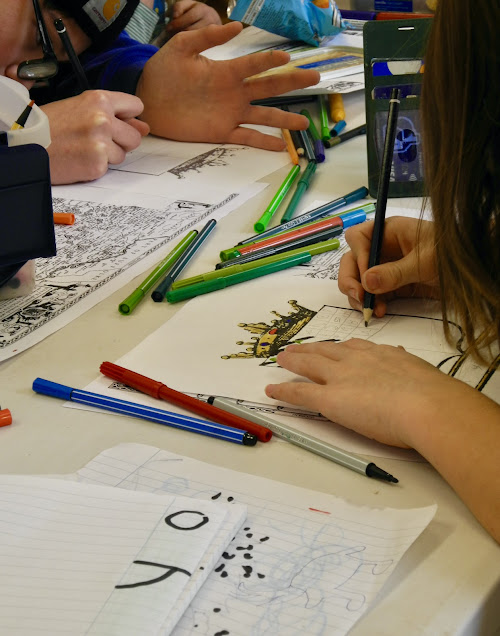Memorable morning with discoveries and cave paintings
Invited to bring in their treasures and discoveries to be identified and dated, the response from members of Colchester Young Archaeologists' Club was unexpected. Found near her school, one of our youngest members, had a Roman pot sherd and part of a vitrious enamel pot from centuries later. Another YAC had discovered some fossils from the Suffolk coast at Bawdsey and showed us some interesting finds from an organised archaeological exercise in London. We had an update from the YAC who had discovered the fossil bison bone at East Mersea. She brought in some other bones discovered on the Mersea Island coast, and was able to demonstrate how she had cleaned them up and show us what part of the animal they were from (picture above). None of our members minded handling, identifying and examining these. Our refreshment break was enhanced with a visual presentation of cave paintings from one of our volunteers. Following this, club members created their own cave paintings with pastels and paints on black paper. Our teenage volunteer pegged them on to a barrier tape on the former NAAFI stage area at Roman Circus House, and we created our own "cave". (Pictures below.) One of the volunteer leaders who I met at the Greenwich Park event organised by CBA/YAC in 2023 had created cave paintings with her group and shared the idea with me. The activities were geared to our "Human Life" time line project, which will start at 900,000 years BCE with the "hominid" footprints in the sand discovered with coastal erosion in 2013 on the Norfolk coast at Happisburgh. Our time line will also feature the flint tools, found in Kent and on Mersea Island, which date back to 450,000 years ago. These were kindly lent to us by the current director of archaeology at Roman Circus House.






Comments
Post a Comment